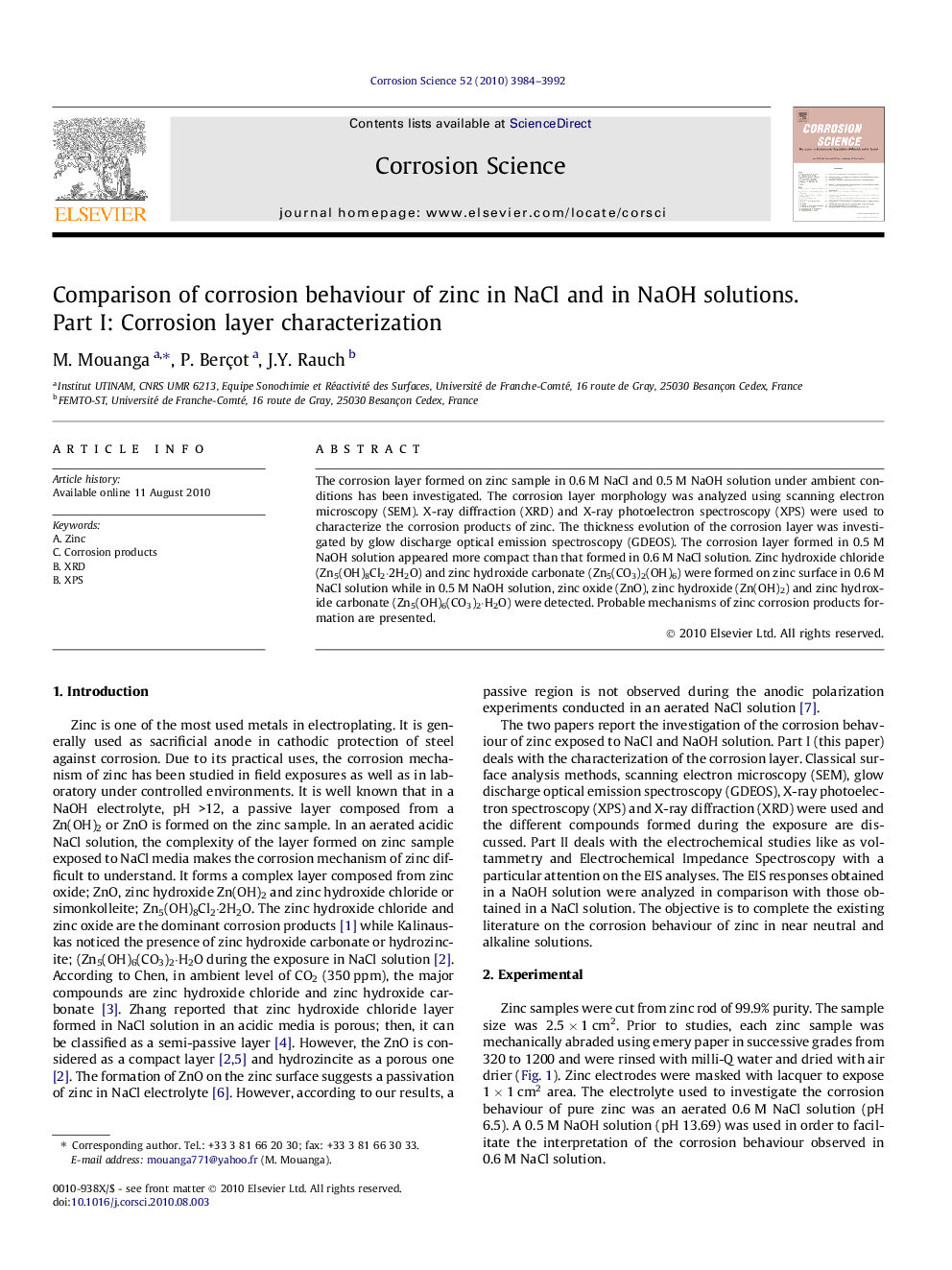| Article ID | Journal | Published Year | Pages | File Type |
|---|---|---|---|---|
| 1470432 | Corrosion Science | 2010 | 9 Pages |
The corrosion layer formed on zinc sample in 0.6 M NaCl and 0.5 M NaOH solution under ambient conditions has been investigated. The corrosion layer morphology was analyzed using scanning electron microscopy (SEM). X-ray diffraction (XRD) and X-ray photoelectron spectroscopy (XPS) were used to characterize the corrosion products of zinc. The thickness evolution of the corrosion layer was investigated by glow discharge optical emission spectroscopy (GDEOS). The corrosion layer formed in 0.5 M NaOH solution appeared more compact than that formed in 0.6 M NaCl solution. Zinc hydroxide chloride (Zn5(OH)8Cl2·2H2O) and zinc hydroxide carbonate (Zn5(CO3)2(OH)6) were formed on zinc surface in 0.6 M NaCl solution while in 0.5 M NaOH solution, zinc oxide (ZnO), zinc hydroxide (Zn(OH)2) and zinc hydroxide carbonate (Zn5(OH)6(CO3)2·H2O) were detected. Probable mechanisms of zinc corrosion products formation are presented.
Research highlights► Corrosion layer formed on zinc depends on the electrolyte and ambient conditions. ► Corrosion products in NaCl solution, (Zn5(OH)8Cl2·2H2O) and (Zn5(CO3)2(OH)6). ► Corrosion products in NaOH solution, (ZnO), (Zn(OH)2) and (Zn5(OH)6(CO3)2·H2O). ► The corrosion layer in NaOH solution is more compact than in NaCl solution.
